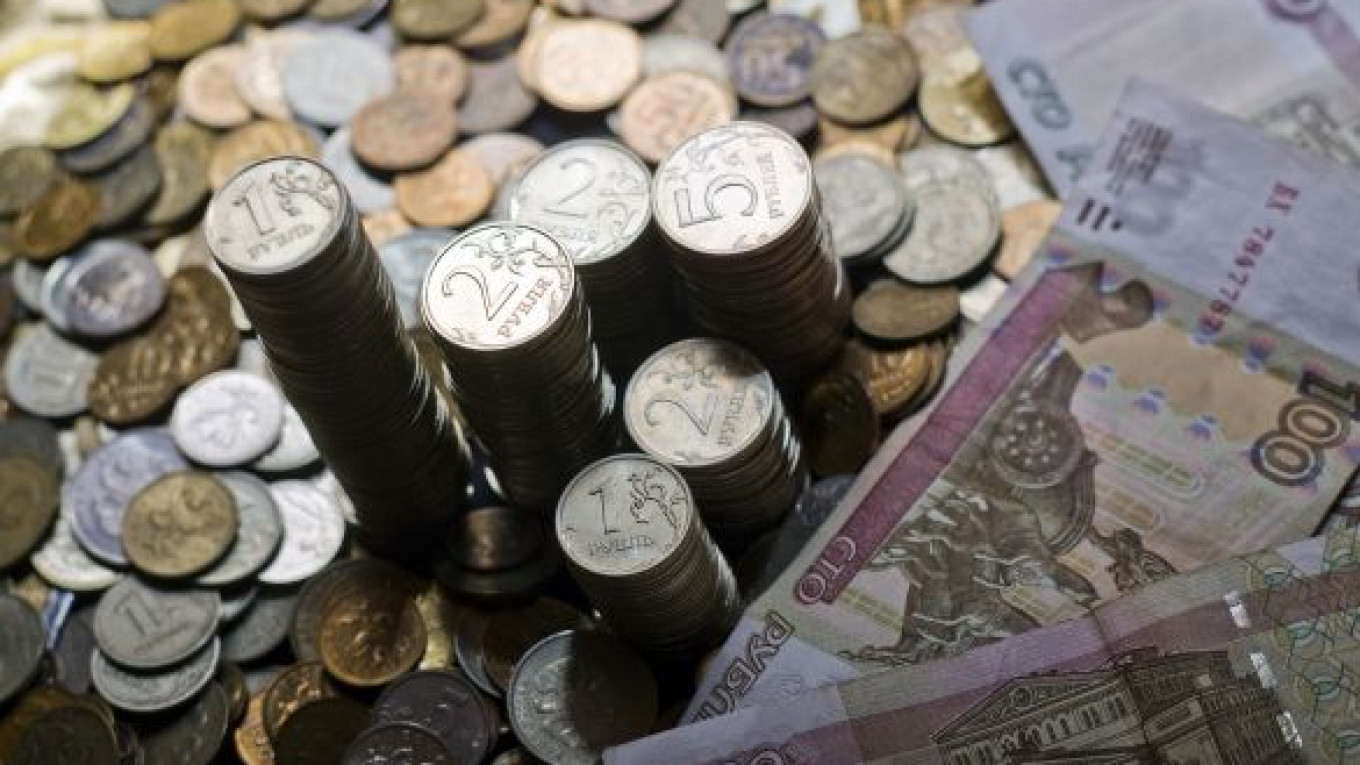The International Monetary Fund said Friday that Russia was facing a solid and speedy strengthening of the ruble, even as the Central Bank poured cold water on the currency's recent appreciation trend with a forecast for a retreat.
The ruble enjoys the attention of investors hungry for big emerging market returns and keen to cash in on high oil prices, but the Central Bank — worried about volatile speculative capital inflows — has been at pains to stress that the currency should not be seen as a one-way rising bet.
The ruble could "in the fairly near future" weaken to 38 against a euro-dollar basket from 35.43 on Friday's close, Alexei Ulyukayev, a Central Bank first deputy chairman, said at the end of a week that saw the currency flirting with its strongest levels in a month.
The ruble also remains relatively strong against the dollar, staying below 30 rubles per dollar since the beginning of the year. On Friday, it closed at 29.90 rubles per dollar.
The IMF, however, argued that Russia — which for years restrained ruble gains to support its fledgling industry and keep inflation in check — needs to learn to live with "significant and fast real appreciation" of the currency.
"Real appreciation puts strong emphasis on structural reforms," Paul Thomson, head of the IMF's mission to Russia, said during a government conference on economic modernization.
Economists say that while Russia managed relatively successful macro and foreign exchange policies during the passing crisis, poor performance handling the real sector of the economy has led it to underperform its BRIC peers, with gross domestic product contracting an estimated 8.5 percent last year.
Of the group, only Brazil saw its economy shrink in the aftermath of the global crisis, while India and China have expanded.
"There does seem to be a recognition that lagging structural reforms are the key to this underperformance," Timothy Ash, head of Central and Eastern Europe research at Royal Bank of Scotland, wrote in a note.
The ruble remains a puzzle for investors, who in recent months have approached it as a tool for lucrative carry trade gains but remain unsure where the oil-driven currency is heading in the longer term.
The Central Bank has been allowing increasing fluctuation in the ruble's exchange rate, promising a transition to a float in a couple of years. Nonetheless, for now the currency still trades in a tight range against a dollar-euro basket.
The Central Bank maintains, however, that the path to a "dirty" free float is on track, even if it has no plans to relinquish the right to continue interventions when necessary.
"As we move towards a free float, passive interventions on the boarders of the floating corridor will be gradually reduced. The share of active interventions within the corridor will grow as is happening now," Ulyukayev said.
So far this month, the ruble has remained within the floating corridor, he said, and the Central Bank has purchased several hundred million dollars in such active interventions.
A Message from The Moscow Times:
Dear readers,
We are facing unprecedented challenges. Russia's Prosecutor General's Office has designated The Moscow Times as an "undesirable" organization, criminalizing our work and putting our staff at risk of prosecution. This follows our earlier unjust labeling as a "foreign agent."
These actions are direct attempts to silence independent journalism in Russia. The authorities claim our work "discredits the decisions of the Russian leadership." We see things differently: we strive to provide accurate, unbiased reporting on Russia.
We, the journalists of The Moscow Times, refuse to be silenced. But to continue our work, we need your help.
Your support, no matter how small, makes a world of difference. If you can, please support us monthly starting from just $2. It's quick to set up, and every contribution makes a significant impact.
By supporting The Moscow Times, you're defending open, independent journalism in the face of repression. Thank you for standing with us.
Remind me later.


